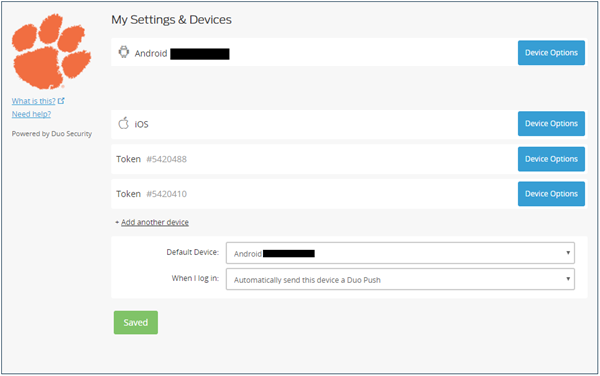
VPN (Virtual Private Network)
HOW TO: Connect to the Clemson VPN (CUVPN) Some Clemson programs and systems require that a computer be located on campus to function properly. To get around this, Clemson has implemented a Virtual Private Network (VPN) for computers that are not on campus. Clemson's VPN, called CUVPN, functions by routing all of the network traffic on the computer through a secure connection to campus. This makes the computer appear to be on campus for all intents and purposes and is especially useful if a user is in a location with an unsecured network since the CUVPN creates a secure channel.
Before you begin, make sure that you have registered for Duo Enrollment To connect to CUVPN, the computer must first have the Cisco Anyconnect VPN Client installed.
To install the Client, follow the instructions below; if you have already installed the Client, skip to the second section.
1. Open your web browser and navigate to cuvpn.clemson.edu
2. Log in with your Clemson username and password when prompted.
3. You may be asked for a Duo authentication. Complete it on your phone or secondary device.
4. At the welcome message, click Continue.
5. At the next screen, the page will attempt to automatically install the Cisco Anyconnect VPN Client. If any plug-ins ask for permissions, you can allow them to run. If the automatic installation fails, the web page will give you a link to download the client manually. Just download this file and run it.
6. When it finished downloading, you may need to Open it. Click Next, I accept, Next, Install, Yes, Finish
Logging on to the Virtual Private Network requires Duo two-factor authentication. Once you have enrolled in two-factor authentication and now that you have installed the Client, the following instructions will allow you to use the Client.
1. The Cisco client should always be running in the background. To connect, click on the icon for Cisco client. NOTE: For Windows, this will be in the system tray in the bottom right (you may have to click on an arrow to show more icons). For Mac, this will be on the status bar at the top.
2. When you click on the icon, the client will open and it should be ready to connect.
3. Enter cuvpn.clemson.edu into the drop down box and click Connect.
4. A login box for your Clemson username and password will appear, with a field prompting you for a Duo Passcode. See below for the Duo Passcode options.

Depending on your enrolled device(s) and preferences, you have a few options to enter in the 'Duo Passcode' field:
1. Push - This option is the preferred method for users that have a mobile device with the Duo app enabled. An approval message will be sent to your device and tapping Approve is all that is needed to proceed.
2. Phone - Enter Phone if you have a landline and prefer to receive a phone call verifying your login.
3. SMS - This option can be used on basic cell phones where you will receive a text message for confirmation.
4. Passcode - If you have the Duo app installed, but are unable to connect to a Wi-Fi or cell network, you can open the app and generate a passcode. Enter this passcode the Duo Passcode field to proceed. If you have more than one device, you can choose the device by entering a number (eg. "phone1", "phone2", etc). The number will be based on the order of your devices in the Device Management Portal (https://2fa.clemson.edu). The first phone will be "phone1", the second is "phone2" etc.

1. Once you have authenticated through Duo Security, when the welcome message appears, select Accept. The computer is now connected to CUVPN.
2. When you are finished with the connection, you can click the same icon and select Disconnect.